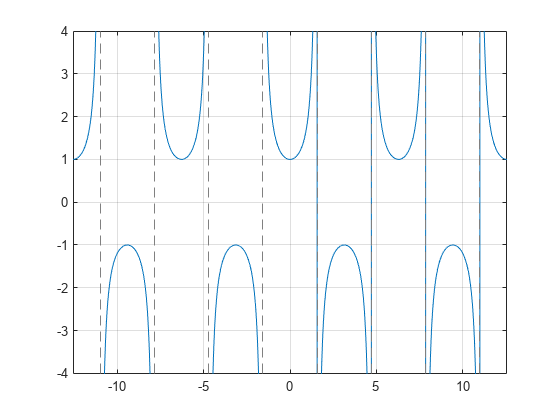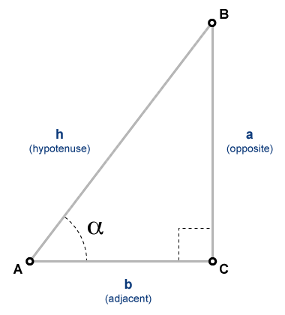sec
Symbolic secant function
Syntax
Description
sec( returns the secant function of
X)X.
Examples
Secant Function for Numeric and Symbolic Arguments
Depending on its arguments, sec returns
floating-point or exact symbolic results.
Compute the secant function for these numbers. Because these numbers are not symbolic
objects, sec returns floating-point results.
A = sec([-2, -pi, pi/6, 5*pi/7, 11])
A = -2.4030 -1.0000 1.1547 -1.6039 225.9531
Compute the secant function for the numbers converted to symbolic objects. For many
symbolic (exact) numbers, sec returns unresolved symbolic
calls.
symA = sec(sym([-2, -pi, pi/6, 5*pi/7, 11]))
symA = [ 1/cos(2), -1, (2*3^(1/2))/3, -1/cos((2*pi)/7), 1/cos(11)]
Use vpa to approximate symbolic results with floating-point
numbers:
vpa(symA)
ans = [ -2.4029979617223809897546004014201,... -1.0,... 1.1547005383792515290182975610039,... -1.6038754716096765049444092780298,... 225.95305931402493269037542703557]
Plot Secant Function
Plot the secant function on the interval from to .
syms x fplot(sec(x),[-4*pi 4*pi]) grid on

Handle Expressions Containing Secant Function
Many functions, such as diff,
int, taylor, and
rewrite, can handle expressions containing
sec.
Find the first and second derivatives of the secant function:
syms x diff(sec(x), x) diff(sec(x), x, x)
ans = sin(x)/cos(x)^2 ans = 1/cos(x) + (2*sin(x)^2)/cos(x)^3
Find the indefinite integral of the secant function:
int(sec(x), x)
ans = log(1/cos(x)) + log(sin(x) + 1)
Find the Taylor series expansion of sec(x):
taylor(sec(x), x)
ans = (5*x^4)/24 + x^2/2 + 1
Rewrite the secant function in terms of the exponential function:
rewrite(sec(x), 'exp')
ans = 1/(exp(-x*1i)/2 + exp(x*1i)/2)
Evaluate Units with sec Function
sec numerically evaluates these units
automatically: radian, degree,
arcmin, arcsec, and
revolution.
Show this behavior by finding the secant of x degrees and
2 radians.
u = symunit; syms x f = [x*u.degree 2*u.radian]; secf = sec(f)
secf = [ 1/cos((pi*x)/180), 1/cos(2)]
You can calculate secf by substituting for
x using subs and then using
double or vpa.
